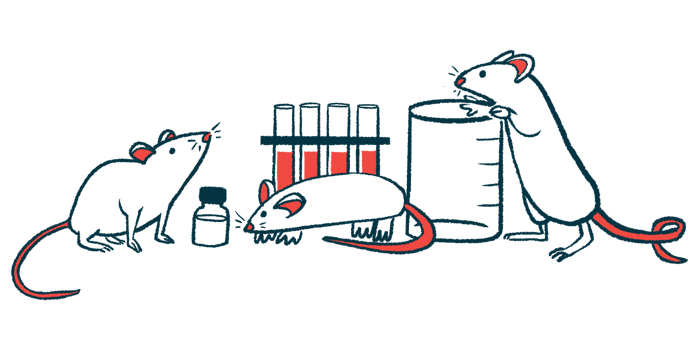DJ-1 Protein Loss Linked to Longer-lasting Immune Response

Loss of a protein called DJ-1, which is linked to the development of early-onset Parkinson’s disease, may also mean a longer-lasting immune response, according to a new study.
Researchers observed that immunoaging — a decline in immune function with aging — was slowed in a man with Parkinson’s who carried a mutation in PARK7, the gene encoding DJ-1, compared with two of his brothers, who had comparable age and did not carry the mutation.
“Our finding suggests an unrecognized critical role of DJ-1 in regulating immunoaging, discovering a potent target to interfere with immunoaging- and aging-associated diseases,” the researchers wrote.
They also observed that mice that were stripped of the PARK7 gene showed reduced signs of immunoaging compared with wild-type (normal) mice of the same age, starting from a young age.
“The data consistency between both human and mice with DJ-1 deficiency supports a highly potent strategy to interfere with or model immunoageing for various complex diseases and infectious diseases,” Markus Ollert, MD, one of the study’s co-authors, said in a press release. Ollert directs the Department of Infection and Immunity (DII) at the Luxembourg Institute of Health (LIH).
The study, “DJ-1 depletion prevents immunoaging in T-cell compartments,” was published in EMBO Reports by an international team of researchers.
The immune system helps the body keep itself safe from infection and other diseases by mounting an immune response in which cells and antibodies work together to destroy any potentially harmful substances.
With age, there may exist fewer cells and antibodies to bring about an immune response, and the immune system becomes slower — and less effective — at responding. This increases the risk of getting sick.
“Decline in immune function during aging increases susceptibility to different aging-related diseases,” the researchers wrote, adding that this creates a growing burden on primary healthcare with older populations.
Building on their earlier work, which had shown that DJ-1 reduces the number of T-cells — a type of immune cell — in tissues, the researchers thought that the protein also could play a role in immunoaging.
DJ-1 is essential for maintaining the health of nerve cells. Mutations in its encoding gene result in a low or no protein production that is associated with the development of early-onset Parkinson’s.
To understand whether their finding could be translated from the lab into potential treatments, the researchers compared hallmarks of immunoaging between a patient with Parkinson’s (the “index” patient) and his healthy siblings.
The patient carried two copies of a mutation called c.192G>C in the PARK7 gene that is known to cause Parkinson’s. His two brothers did not carry the mutation. Their ages ranged from 56 to 63.
The researchers watched for differences in two types of immune cell — called CD4 and CD8 T-cells. They found that the number of naïve CD8 T-cells in circulation throughout the patient’s body was about double that of his brothers. A naïve T-cell is one that has been released by the thymus, where it matures, but has not yet encountered its unique antigen. An antigen is a substance that triggers an immune response.
In turn, the number of T-cells that had reached their final function was much lower, as was the number of senescent T-cells. Senescence occurs when a cell ages and stops dividing but does not die; as senescent cells accumulate in tissues, they may cause inflammation and damage to neighboring healthy cells.
Similar observations were made for CD4 T-cells.
“These data [encouraged] us to believe that the reduced immunoageing observed in the index patient was driven by DJ-1 deficiency,” said Rejko Krüger, MD, another of the study’s co-authors. Krüger directs the LIH’s Department of Transversal Translational Medicine.
To confirm this finding, the researchers used mice that were engineered to lack the PARK7 gene. At 45 weeks of age, which in mice corresponds to a middle age, mice lacking DJ-1 had T-cells that were more sensitive to activation by an antigen than those of their wild-type counterparts.
Similar to the observations in humans, mice lacking DJ-1 had a greater number of naïve T-cells and a lower number of aged T-cells.
Changes leading to reduced signs of immunoaging started at a young age and involved reduced oxidative phosphorylation, a process that has been implicated in T-cell exhaustion.
“Our work … offers a unique animal model with reduced immunoageing phenotypes to allow researchers to explore the potential roles of a relatively juvenile immune system in the immune and ageing associated diseases,” said Feng Hefeng, PhD, who led the study and also works at the DII.
According to the team, the next stage for research is to further investigate “the various complex mechanisms that underpin the immunoageing process and their relationships to DJ-1.”
“Understanding the detailed molecular mechanisms through which DJ-1 regulates immunoageing still requires further investigation,” Hefeng added.






